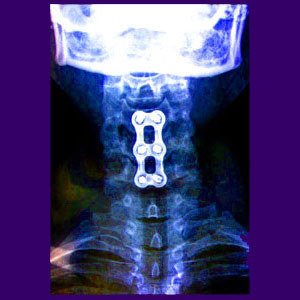
Don’t have spine surgery, unless it is truly a medical emergency. Over the past 15 years of research, patient education and chronic pain advocacy work, the one thing we have consistently observed is the abysmal therapeutic outcomes offered by virtually all spinal operations. However, the reasons for these terrible curative results might surprise you.
Spinal surgery remains one of the most widely used treatments for back pain, as well as a therapy geared towards many other related types of symptoms and functional deficits. There are a few select instances where spinal operations are truly needed, indicated and should be performed, regardless of risk or outcome. However, we find fewer and fewer justified examples of this type of surgical care each and every year, and more and more needless and unsuccessful procedures ruining patients’ lives.
This discussion provides food for thought when it comes to undergoing spine surgery. If we had to summarize the following essay in one extremely vital piece of advice it would surely be: Don’t have spine surgery without knowing the risks and accepting the strong possibility that the procedure might fail you on multiple levels.
Don’t Have Spine Surgery for these Diagnoses
The most common reason to have spinal surgery is a diagnosed disc abnormality. Herniated discs and degenerated discs are blamed for causing back pain more than any other diagnosis, even though there has never been any evidence that any type of disc abnormality is inherently pathological. In fact, very few disc abnormalities even have the potential to be painful, since they simply do not negatively influence any nerve tissues. They merely exist innocently and this is a proven fact supported by countless research projects over decades of time.
Most cases of foraminal stenosis and central spinal stenosis are not painful. These structural changes are normal to experience as we get older and the vast majority of case profiles which are operated upon do not demonstrate proof of pathology, since symptoms rarely correlate by clinical expectation.
Minor scoliosis and spondylolisthesis are often treated unnecessarily with spinal fusion, despite there being no evidence that they are creating any symptoms whatsoever.
Facet joint syndrome is the name for symptomatic versions of normal spinal joint degeneration that affects all people as they age. Most facet joint surgeries are completely unneeded.
This list could go on and on. In summary, most of the typical reasons used to justify spinal operations are not valid when viewed objectively. Atypical structure does not accurately predict pain and correcting atypical structure does not imply that any relief will be provided for symptoms that might coincidentally exist. Spinal surgeons know this, but will rarely inform their patients of this universal truth.
Exceptions to the Rule of Don’t Have Spinal Surgery
Virtually any spinal abnormality can be pathological in extreme cases. Some patients do require surgery. While it is impossible to account for every conceivable case profile that objectively warrants surgical intervention, the following conditions generally fit the bill:
Verified nerve root or spinal cord compression syndromes may require spinal surgery, especially if they are being sourced by vertebral and not intervertebral pathology. This includes all forms of definitively symptomatic spinal and foraminal stenosis.
Severe spinal curvature abnormalities can deform the anatomy and threaten physical and neurological functionality. This includes severe examples of scoliosis, lordosis and kyphosis throughout the spine.
Spinal instability caused by injury or excessive degeneration can completely disable a patient. Although many cases of macroinstability are misdiagnosed, some are totally valid diagnostic conclusions and are justified receiving spinal surgery.
To summarize, only truly verified and pathological spinal issues should be considered for surgical treatment. Even in these cases, the prognosis for curative results should be positive and the potential benefits of treatment should outweigh the risks, which is a difficult equation to balance out in the patient’s favor.
Don’t Have Spine Surgery, but Instead Try…
There are many other effective treatments for back pain besides spinal surgery. Readers write to us often reporting that a surgeon told them that they should have surgery… What a surprise? Who would ever have guessed that a doctor who makes a financial killing performing surgery would ever recommend surgery? Are you seriously that naive?
Statistics do not support surgery as a good path towards back pain relief, even when it is needed and indicated. This is a simple truth. Ever heard of failed back surgery syndrome? Yes, the chances are so high that surgery will fail you that there is actually an epidemic condition named for its terrible results. Do you want to be the next victim? Of course not… Instead of surgery, consider the following more enlightened options that are safer and at least as effective, if not exponentially more so:
Nonsurgical spinal decompression is a great option for people with disc pathologies that have been verified as being symptomatic, but are not surgical emergencies. Decompression offers better long-term results than all forms of spinal surgery and presents few risks to consider.
Exercises and physical therapy are very effective at relieving the symptoms of some types of back pain sources, even if they do not address the structural reason blamed for causing the pain. This fact also supports the nonstructural nature of most forms of chronic pain and especially chronic back pain.
Speaking of nonstructural pain, knowledge therapy earns our nod of approval for every patient, since it is the most effective at curing all manner of chronic pain, regardless of diagnosis or location, demonstrates no risks at all and is self-managed for ease of use. Even when a structural reason for pain dose indeed exist, the treatment will convey other health benefits that are crucial for complete recovery and the development of optimal health.





